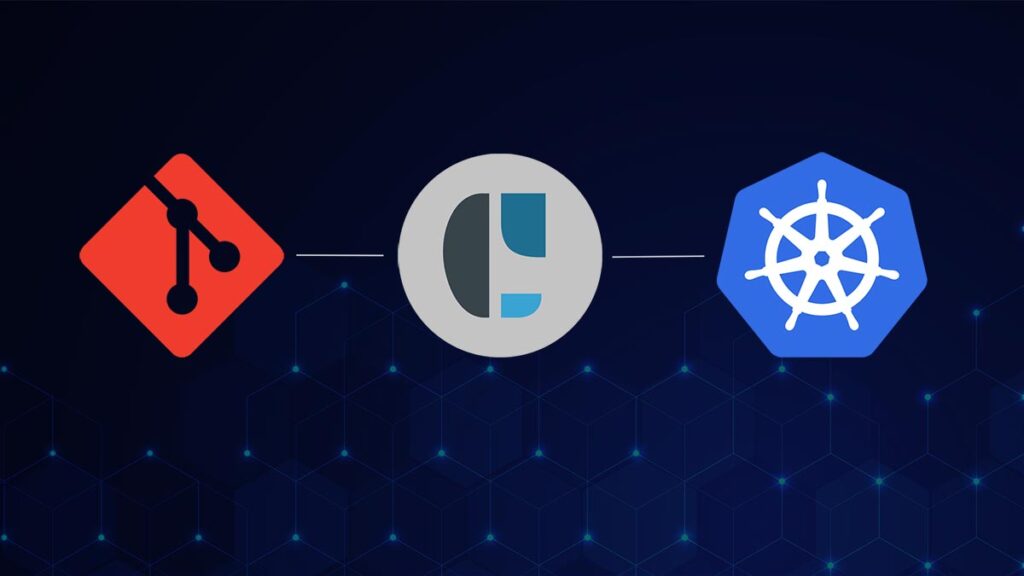Continuous Deployment at scale isn’t free—whether you choose an open-source tool like Argo CD or an enterprise solution like CAEPE, costs accumulate. The question is: where will you pay more?
As engineering teams scale, maintaining consistency in deployment processes becomes essential. Allowing teams to use different deployment solutions often leads to inefficiencies, security risks, and increased operational complexity.
To ensure a reliable and manageable deployment strategy, organizations must decide whether to adopt an open-source tool or invest in an enterprise solution. This article breaks down the true cost of implementation, covering customization, support, integration, and long-term ownership to help engineering leaders make an informed decision.
Projected Cost
Initial Implementation Cost
| Activity | Open Source (person-days) | Enterprise (person-days) |
|---|---|---|
| Evaluation & Selection | 30 | 23 |
| Integration | 60 | 20 |
| Customization | 1,500 | 20 |
| Training | 25 | 10 |
| Deployment | 30 | 20 |
| Sub-Total (person-days) | 1,645 | 93 |
| Cost (USD)* | 493,500 | 27,900 |
Ongoing Costs (Annual Basis)
| Ongoing Maintenance (15%) | 90,000 | – |
| New Features Development | 72,000 | – |
| Platform Operations | 72,000 | 18,000 |
| Cost (USD)* | 234,000 | 18,000 |
*Based on a person-day rate of USD300
Assumptions for Cost Comparison
To reflect the reality of mid-to-large-scale engineering organizations, our estimates are based on the following working scenario:

Engineering Team
300-400 engineers across multiple locations, varying expertise in Kubernetes and CI/CD.

DevOps Team
A centralized group of 10-15 engineers managing deployment pipelines, security policies, and operational consistency.

Compliance Requirements
Strict regulatory needs, including audit trails, RBAC, and security policies to protect production workloads.
Cost Factors
- 3-Week Evaluation Pilot: 2-person team to assess viability.
- 30 Sprints x 5-Person Team: Estimated engineering effort for full customization.
- Customization: Based on all custom options being implemented (see point 6)
- Ongoing costs for open-source solutions include: (1) Ongoing Maintenance (15% of original effort) for bug fixes, upgrades, and depreciation, (2) New feature development to adapt to evolving business needs, and (3) Platform operations for managing and maintaining the deployment structure.
- Person-day rate (USD): 300
- Typical Argo Enterprise Customizations
- Application Configuration: Modify Helm charts, Kustomize overlays, and YAML manifests; implement rolling updates, canary, or blue-green deployments.
- Authentication & Authorization: Define RBAC policies, integrate with SSO (LDAP, OIDC, SAML), and enforce external authorization rules.
- Sync & Automation: Configure auto-sync, manual approval workflows, and pre/post-sync hooks for tasks like migrations or security checks.
- Observability & Monitoring: Integrate with Prometheus, Grafana, or Datadog for dashboards, alerts, log management, and DORA metrics.
- Policy Enforcement & Validation: Use OPA/Kyverno for compliance, and admission webhooks for pre-deployment validation.
- Multi-Tenancy & Security: Set up projects with scoped access, enforce namespace isolation, integrate with external secrets managers, and apply custom encryption.
- Config Management & CLI Extensions: Extend Helm/Kustomize with custom tools and scripts; create CLI wrappers to enforce operational workflows.
- UI & Theming: Customize dashboards, add plugins, or modify UI elements to improve usability and align with branding.
- Scalability & Performance: Optimize Argo CD for large-scale, multi-cluster, or multi-region deployments with tuning for memory, caching, and replicas.
Key Implementation Considerations
Choosing between an open-source and an enterprise deployment solution requires careful consideration beyond cost. This section explores key factors like customization, security, training, and operational complexity that influence the implementation effort.

Customization Effort
- Open-source solutions offer high flexibility but require extensive, continuous engineering effort. Initial customization may involve modifying Helm charts, Kustomize overlays, and YAML manifests to meet deployment needs. In this context, additional integration may be required for advanced functionality, such as Argo Rollouts for deployment strategies and Argo Workflows for complex workflow orchestration. Beyond this, ongoing effort is needed for maintenance, feature development, and platform operations.
- Enterprise solutions come with built-in governance, automation, and UI enhancements, reducing customization overhead.

Security & Compliance
- Open-source solutions require custom RBAC policies, SSO integration (LDAP, OIDC, SAML), and external authorization logic.
- Enterprise solutions provide pre-configured security policies and audit capabilities out of the box.

Training & Enablement
- Open-source solutions require ongoing internal training, not just for Kubernetes and initial setup, but also for maintaining platform operations, implementing new features, and managing upgrades
- Enterprise solutions provide structured onboarding and training, vendor-led feature updates, and managed services, reducing the need for continuous internal training.

Observability & Monitoring
- Open source solutions require integration with Prometheus, Grafana, or Datadog for monitoring and ongoing platform operations, requiring internal teams to manage alerts, logs, and performance optimizations.
- Enterprise solutions offer built-in dashboards, automated alerting, and vendor-managed log aggregation, reducing the ongoing platform management burden.
Breaking Down the Costs: Open-Source vs. Enterprise
Beyond licensing fees, deployment solutions come with hidden costs in integration, staffing, and ongoing costs such as maintenance, new feature development, and platform operations. Here, we compare the total cost of ownership (TCO) for Argo CD vs. CAEPE.
1. Initial Setup Costs
| Cost Factor | Open-Source (Argo CD) | Enterprise (CAEPE) |
|---|---|---|
| Evaluation | No licensing costs, but requires internal research, testing, and PoC development. | Vendor provides demos, guided evaluations, and PoC support (may include consulting fees). |
| System Integration | Requires in-house expertise to integrate with CI/CD pipeline, Terraform, Vault, and Kubernetes. | Pre-built integrations and professional services for faster setup (higher upfront cost). |
| Feature Development & Customization | High flexibility but demands extensive engineering effort. | Most features built-in, reducing customization overhead. |
2. Operational Costs
| Cost Factor | Open-Source (Argo CD) | Enterprise (CAEPE) |
|---|---|---|
| Training | Requires internal knowledge-building, documentation, and external consultants. | Structured training programs, certifications, and vendor-led onboarding. |
| Staffing | More DevOps engineers required for integration, feature development, and ongoing support. | Fewer engineers required as vendor support reduces internal burden. |
3. Ongoing Maintenance & Long-Term Costs
| Cost Factor | Open-Source (Argo CD) | Enterprise (CAEPE) |
|---|---|---|
| Support & SLAs | Community support, no SLAs; high internal troubleshooting effort, ongoing maintenance, and managing feature upgrades. | Dedicated support with SLAs; vendor provides patches, updates, and may include new feature releases as part of the subscription. |
| Time to Deploy | Longer deployment timeline due to manual setup, ongoing maintenance, and resource allocation for new feature development and platform operations. | Faster deployment due to vendor expertise and managed services,automated updates, and managed services that reduce operational overhead. |
| Long-Term TCO | No licensing fees, but significant ongoing costs for maintenance, feature development, and platform operations—leading to higher cumulative DevOps effort over time. | Higher upfront licensing cost, but predictable expenses, vendor-managed maintenance, and reduced internal DevOps overhead. |
Final Takeaway: Which Approach is More Cost-Effective?
While open-source tools like Argo CD eliminate licensing fees, they come with hidden costs—extensive customization, higher engineering effort, and ongoing maintenance, feature development and platform operations. Enterprises with strict compliance, security, and scalability requirements may reduce long-term TCO with a managed enterprise solution like CAEPE, as it lowers staffing needs, deployment time, and operational overhead.
For organizations with strong internal DevOps expertise, Argo CD may still be a viable option. However, for those seeking predictability, faster implementation, and reduced DevOps burden, enterprise solutions can provide a more cost-effective, scalable approach in the long run.
Disclaimer: This analysis is based on internal evaluations and is for informational purposes only. Organizations should assess their unique requirements and consult relevant stakeholders before making decisions.
Copyright © Biqmind Pte Ltd. This article is for informational purposes only and is accurate to the best of our knowledge as of March 2025. Product or corporate names mentioned may be trademarks or registered trademarks of their respective owners.

CAEPE Continuous Deployment
Manage workloads on Kubernetes anywhere robustly and securely.
- Shores up security by simplifying deployment anywhere, supporting managed services, native Kubernetes, self-hosted, edge and secure airgapped deployment targets.
- Supports GitOps and provides guided, UI-driven workflows for all major progressive delivery strategies.
- Has RBAC built-in, providing inherent enterprise access control for who can deploy.
- Supports extended testing capabilities enabling your team to run different tests quickly and easily.


